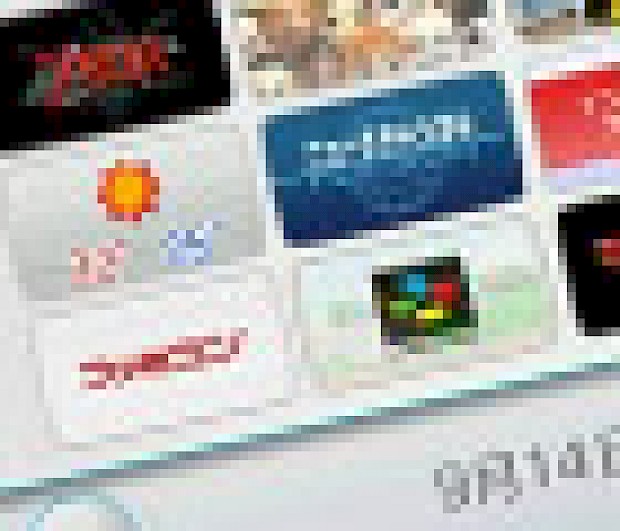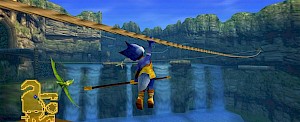News: New Wii Menu, Channels Information

Posted 22 Feb 2008 at 16:23 by Nathan Whincup
The latest Nintendo conference has revealed new information about the development of Wii Channels, and information for future Wii updates.
It really has been a great GDC for Nintendo and their fans. Along with some new WiiWare information and games, release dates for Nintendo's big hitters and confirmation of downloadable content for the Wii, they're going to have to do a lot to top this week's performance at E3. But the information hasn't ended yet! Some new information has come forth from Takashi Aoyama's GDC conference.
Aoyama joined Nintendo in 2000, when online play was pretty much non-existant on Nintendo's consoles. However, it was around this time that work had begun on making a cheap, easy-to-use online system, which would eventually evolve into the Nintendo Wi-Fi Connection and WiiConnect24. In 2002, Aoyama worked on peer-to-peer network gaming, which used a central server to find and connect gamers through a direct connection to lower costs.
Aoyama began work on the Wii Menu in 2005, and took the Wii's 'something new every day' philosophy to think of ideas of how to deliver content to Wii owners through an 'always-on' internet connection, but at a minimum power consumption. This would eventually evolve into the Wii's standby mode and WiiConnect24.
The project was started by working on text-input, for which a full on-screen keyboard and an Animal Crossing-like keyboard was experimented with. Following the production of the keyboard, ways of viewing the news, weather and the internet were brainstormed. However, the next challenge was making these more accessible than on a PC, which has all of those functions already. A faster, more stress-free experience was the key, and loading times were lessened on the Wii as opposed to the PC by milliseconds. Aoyama stated that with each system update, the Channel loading times would be lessened, as the programmers are continually working on streamlining the Channel experiences.
Separate user accounts for each member of the family on the Wii were toyed with, but having different accounts with passwords would be too messy. A parental control feature which shut down the console after a certain length of time was also experimented with, but was too problematic. It was scrapped in favour of Play History, that little message which appears on your Message Board to show you how long you've spent playing each game in a day. This would allow parents to monitor the amount of time their children spent playing games, and it also explains why Play History cannot be deleted.
"What would it mean to make a machine that is fun for the entire family?" Aoyama asked. "First of all, you have to make the console not seem like an enemy in the household." This ties into changing the demographic of console gaming. The Wii Channels, such as the News and Forecast Channels, were also cleverly designed to stop family members from wondering how on earth you play the console.
"With other consoles, parents are always telling children to turn them off. But with Wii, perhaps we can see parents who remind children to turn on the Wii in the morning," Aoyama said, quoting a member of his team.
The Wii Menu came about when the team came to the conclusion that they would need to pack a lot of things like the News and Forecast Channels into one place. The Wii Menu was created as a visual key, with a television shop window showing several rows of screens as the inspiration for the Menu we all know and love today. The Wii Menu showing various Wii Channels was described by Aoyama as a companion to the television.
The TV Schedule Channel, which will launch soon in Japan, could not be launched worldwide with all of the same features contained in the Japanese version of the Channel. Japan has one television schedule, whilst the US and Europe have thousands, so this is quite understandable.
The Forecast and News Channels were also controversial at one point, due to them being available at any time on the PC, TV or on mobile phones. So the Channels were given the Nintendo image, which of course refers to the rotatable globe which we've come to love since its launch shortly after the Wii's release.
The Mii Channel was also briefly discussed. It came about as the result of a demo created by another team inside Nintendo, who showed it to Aoyama's team. It's likely that this was the ill-fated DS version of the Mii Channel, which was shown off last year. A Mii of Iwata was created, and the team were worried that Iwata would react badly!
The Message Board's ability to leave messages for other family members and to show play history was described as a way that the Wii would seem to offer something new every day, even for those not connected to Wi-Fi.
The Everybody Votes Channel was cited as a way of providing Wii owners with the feeling that there are others out there (the truth is out there) with Wii consoles, and to show what they are thinking.
Aoyama said that other Wii Channel developers have been provided with the means to add information to Channel icons without having to enter the Channel. For instance, the Everybody Votes Channel's ability to show the latest polls, and the News Channel's news reel.
The third version of the Wii Menu also allows for certain games to install Channels onto the Menu. This has been seen in Wii Fit and Mario Kart Wii, and allows the Channels to be played even when the game is not in the console.
Games, such as Super Mario Galaxy (remember the Message Board shots that showed Animal Crossing messages before the Wii launch too?), can now send messages to the Wii Menu too. URL links in messages sent to the Wii Message Board will now open the Internet Channel when clicked, too.
And here's a bit of cool but utterly useless trivia. The flashing of the Wii's signature blue light is timed perfectly to the call of the Japanese bush warbler, a bird whose chirp can be heard throughout the Spring and Summer in Japan.
Aoyama then got back down to WiiWare. He said that it was not intended to replace retail games, but to allow more price-flexible games without restrictions such as having to contain a vast amount of base content. He said that the Wii is connected to most owners' living room TVs, reaching a lot of family members and providing a great business opportunity, as well as being an excellent complement to boxed games.
Aoyama moved onto the Everybody's Nintendo Channel, which lets users view Wii and DS game videos, play DS demos and vote for which games they like. Aoyama stated that this service would be offered in America and Europe in the coming months. Yay!
And back to WiiWare, an instruction manual for each game is available to read before a purchase, so lots of information can be obtained before you spend your Wii Points.
Aoyama also mentioned using Wii Points to purchase downloadable content and paid-for services for WiiWare games. He said this will let Nintendo offset the development costs of add-on content. This will also be available for disc-based games, though content will be purchased in-game as opposed to in the Shop Channel.
Storage limitations were also addressed. WiiWare games will be compressed, and they begin to expand when played. Manuals will also only be stored online, not in the ROM.
Finally, LostWinds was shown off again! The character was controlled with the Nunchuk, and the Wii Remote controlled the wind (used to carry and control the character, and encircle and blow away enemies). This was also confirmed as a WiiWare launch title in the UK and America!
Lots of juicy information, just how we like it. Stay tuned to N-Europe for the latest on WiiWare.






















